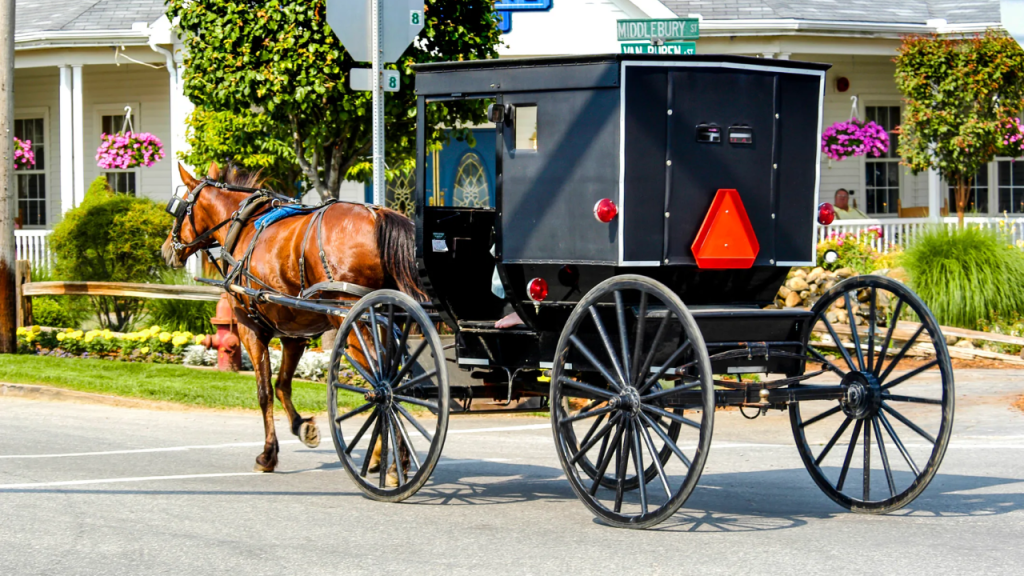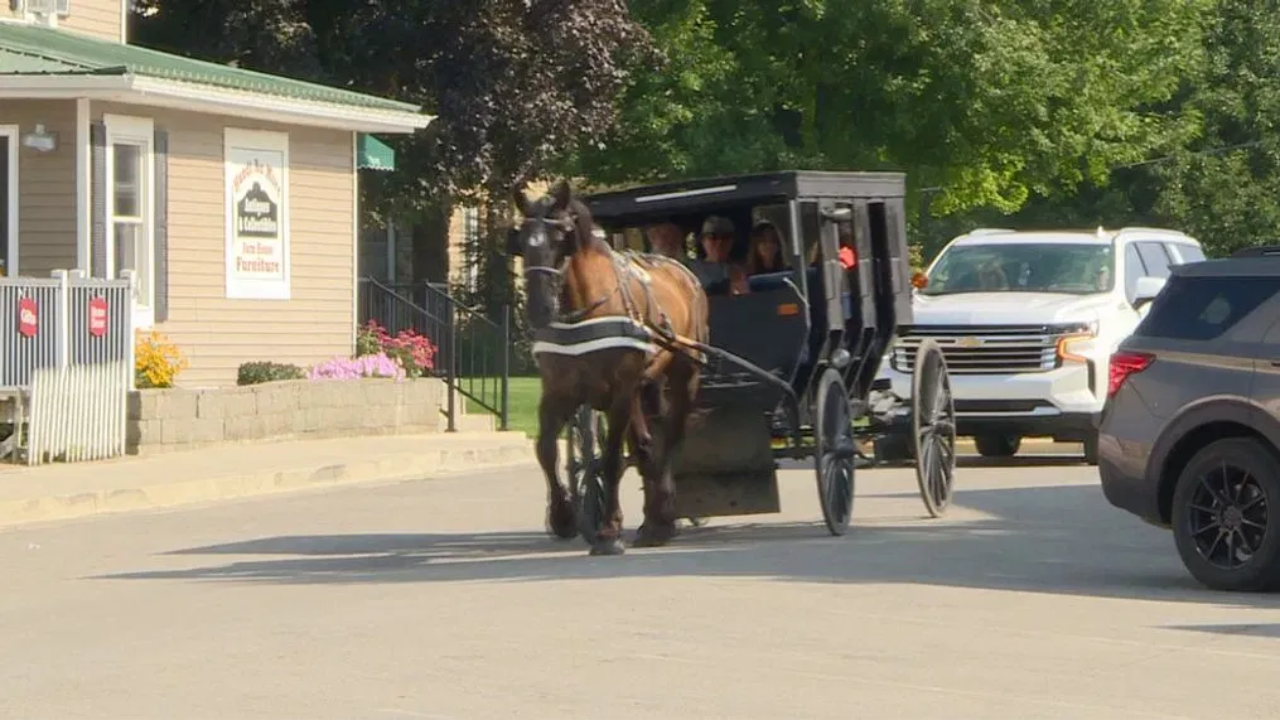In the Walmart Parking Lot, an Amish Horse and Wagon Were Stolen While the Family Shopped!
CNS News–In an extraordinary incident that unfolded on a seemingly ordinary Saturday, the quiet town of Sturgis, Michigan, became the scene of an unusual theft that captivated residents and drew wider attention for its peculiar nature. On this particular day, an Amish family, adhering to their traditional way of life devoid of modern conveniences, experienced an unexpected disruption when their means of transportation, a horse and buggy, was stolen from a Walmart parking lot while they were inside shopping.
The incident occurred at approximately 5:30 p.m. on the 1500 S. Centerville Road Walmart, situated some 95 miles south of Grand Rapids near the Indiana border. It was here that the family, unsuspecting of any misfortune, had parked their buggy, a common sight in regions with Amish communities, only to return and find it missing.
The theft was witnessed by a truck driver, also parked in the Walmart lot, who observed a female individual commandeering the buggy and promptly reported the sighting to the authorities. His prompt action and detailed description of the suspect played a crucial role in the unfolding investigation.
Earlier in the day, before the theft, the Sturgis Department of Public Safety had already encountered the 31-year-old female suspect under circumstances that remain undisclosed. This prior contact would later become a critical piece of the puzzle in tracing the stolen property.
Amish horse and buggy stolen from Walmart parking lot while family shopped https://t.co/t8V3SCVIJl pic.twitter.com/DENuqEZbJR
— Eyewitness News (@ABC7NY) January 25, 2024
With the information at hand, the police embarked on a search that concluded later the same evening with the location of the stolen horse and buggy. The discovery was made near a local motel, a short distance from the scene of the crime, where the alleged suspect was found and arrested without any reported incidents. The swift resolution of the case was a testament to the efficiency of the local law enforcement and the collaborative spirit of the community members involved.
Following her arrest, the suspect was lodged at the St. Joseph County Jail, facing charges that included larceny and the more uncommon charge of larceny of livestock, reflecting the unique nature of the stolen property. The legal proceedings awaited her arraignment, where the full details of the case would be presented and adjudicated.
In a heartening conclusion to an otherwise distressing event, the horse and buggy were returned to the Amish family, unharmed and intact. The incident, while unsettling, ended without harm to the animal or loss of the traditional vehicle, sparing the family further distress.
Read More News: Nearly 200 Defendants Arrested and Charged: A Nationwide Crackdown on Drug Trafficking!
Shocking Crime: 80-Year-Old Man Murders Wife and Adult Kids in Murder-Suicide at LA Home!

This incident, occurring on a day like any other, serves as a reminder of the unexpected challenges that can arise, even in the most serene communities. It highlights the resilience and resourcefulness of those affected and the crucial role of vigilant citizens and responsive law enforcement in maintaining the peace and security of our neighborhoods.

